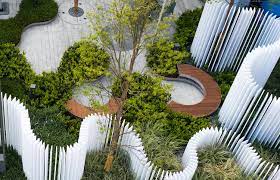A basic principle of landscape design is the use of line, which shapes and defines the placement of plants and objects. These physical attributes help create interest and variety in a landscape and add to its aesthetic appeal. An upright form of a plant provides a high visual impact, while a prostrate one has low visual impact. look these up for more info.
To design an ecological and functional landscape, it is essential to understand the environmental conditions of the site. This can make landscaping easier and more sustainable. Study the landscape’s existing features, including sun and wind exposure, sight lines, sound transmission, and soil conditions. A plot plan can help you identify these factors and use them to your advantage.
The placement of your plants is also important. The amount of sunlight they receive throughout the day will determine their health. Understanding how the sun rays hit your yard will allow you to choose the best plants for the area. To do this, observe the sun’s position in the yard during different times of the day and compare it with the location of your house.
In landscape design, woody ornamentals create borders, hedges, and specimen plantings. They also provide structure and diversity. They can be grouped together in a mulched bed or along a curving edge. Many of them add fragrance and a sense of seasonality to the environment. They can also control erosion and reduce the area of lawn. They can also be used to attract wildlife to your landscape.
A good landscape design focuses on the interplay of the elements. Lines should be used sparingly, as they can influence the way that visitors perceive the landscape. A straight line landscape can be labour-intensive to maintain. A curved line, on the other hand, encourages movement. It can also encourage more active lifestyles.
The proper use of color can make a space appear larger or smaller. A strong color in the middle of a space can draw the eye. But a dense border or overhanging structure will make the space feel smaller. Similarly, a dense hedge or border of shrubs can enclose an area.
Using materials that support sustainability is another important element of landscape design. Consider using materials that are renewable, local, and energy efficient. For example, you can use recycled plastic material for decking and fencing. You can also recycle old railroad ties for a fence or deck. However, make sure the recycled material is safe. If it isn’t, it can leach chemicals into the ground.
Landscape design involves planning large outdoor spaces, such as parks and gardens. Landscape architects are specifically trained to create these landscapes. They also work with municipalities on commercial and industrial projects. In addition, they are involved in environmental restoration and habitat restoration.

